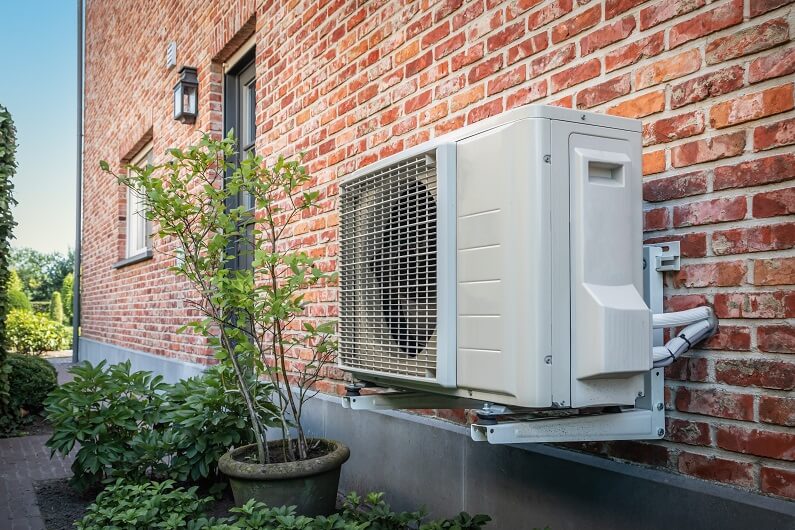As homeowners increasingly look for sustainable and energy-efficient solutions, heat source pumps have emerged as a popular alternative to traditional heating systems. But what exactly is a heat source pump, and how does it work?
What Is a Heat Source Pump?
A heat source pump is a device that transfers heat from an external source, such as the air, ground, or water, into your home. Unlike traditional heating systems that generate heat by burning fossil fuels or using electrical resistance, heat source pumps move heat from one place to another, making them much more energy-efficient.
There are two main types of heat-source pumps: air source heat pumps (ASHPs) and ground-source heat pumps (GSHPs). Both types operate on the same basic principle of heat transfer but differ in their heat source and installation requirements.
How Do Heat Source Pumps Work?
The operation of a heat source pump can be compared to that of a refrigerator but in reverse. Here’s a simplified explanation:
1. Heat Absorption: The pump absorbs heat from the outside environment—whether it’s the air, ground, or water—through a refrigerant fluid in the system’s evaporator.
2. Heat Transfer: The absorbed heat causes the refrigerant to evaporate into a gas. This gas is then compressed, which increases its temperature.
3. Heat Distribution: The now-hot gas passes through a heat exchanger, where the heat is transferred to your home’s heating system, such as radiators, underfloor heating, or hot water cylinders.
4. Recycling: After transferring the heat, the refrigerant cools down and turns back into a liquid. The cycle then repeats.
Because heat source pumps transfer existing heat rather than generating it, they can be up to 300-400% efficient. This means that three to four units of heat are produced for every unit of electricity used to operate the pump.
Types of Heat Source Pumps
As mentioned earlier, there are two primary types of heat source pumps: air source and ground source. Let’s take a closer look at each.
Air Source Heat Pumps (ASHPs)
Air source heat pumps extract heat from the outside air, even when temperatures are as low as -15°C. ASHPs are easier and less expensive to install compared to ground source pumps because they don’t require extensive digging or underground piping. They are typically installed outside the home, either on a wall or on the ground, where they can capture ambient heat from the air.
Air To Heat, a leading provider of heat pump installations, highlights that ASHPs are particularly suited for properties with limited outdoor space or where ground installation is not feasible. These pumps are also versatile, offering both heating and cooling capabilities, making them a tremendous year-round solution.
Ground Source Heat Pumps (GSHPs)
Ground source heat pumps, on the other hand, extract heat from the ground. This is possible because the ground maintains a relatively constant temperature throughout the year. GSHPs require a network of pipes to be buried in the ground, either in horizontal trenches or vertical boreholes, to absorb heat.
While GSHPs are more expensive and complex to install due to the need for ground excavation, they are generally more efficient than ASHPs because the ground provides a more stable heat source. They are ideal for properties with ample outdoor space and are a long-term investment in energy efficiency.
Benefits of Installing a Heat Source Pump
Installing a heat source pump in your home offers numerous benefits, both for your wallet and the environment.
1. Energy Efficiency and Cost Savings
Heat source pumps are significantly more efficient than traditional heating systems, as they move heat rather than generate it. This high efficiency translates to lower energy consumption and reduced heating bills. While the upfront cost of installing a heat source pump can be higher than that of a conventional system, the long-term savings on energy bills can offset the initial investment.
2. Environmental Benefits
Heat source pumps dramatically reduce your home’s carbon footprint by using renewable sources of heat, such as the air or ground. Unlike fossil fuel-based systems, they don’t emit harmful greenhouse gases during operation, making them a greener alternative. As the world moves towards more sustainable energy solutions, installing a heat source pump is a step in the right direction for environmentally conscious homeowners.
3. Versatility and Comfort
Heat source pumps provide consistent and reliable heating, even in colder climates. Additionally, many systems, particularly ASHPs, offer cooling capabilities, making them a versatile solution for year-round comfort. This dual functionality means you can maintain a comfortable indoor temperature regardless of the season.
4. Eligibility for Government Incentives
In many regions, installing a heat source pump makes you eligible for government incentives, such as the UK’s Renewable Heat Incentive (RHI). These incentives can significantly reduce the overall cost of installation and provide financial returns over time.
5. Low Maintenance and Longevity
Heat source pumps are known for their durability and low maintenance requirements. With proper installation and regular checks, these systems can last 15-25 years or more, providing reliable service with minimal upkeep.
Is a Heat Source Pump Right for Your Home?
Whether a heat source pump is the right choice for your home depends on various factors, including your property’s location, size, and insulation. Consulting with experts, like those at Air To Heat, can help you determine the best type of pump and installation method for your specific needs. They can also guide you through assessing your home’s suitability, potential cost savings, and available incentives.
Heat source pumps offer a highly efficient, environmentally friendly, and versatile home heating and cooling solution. By understanding how they work and considering the benefits they provide, you can decide whether to invest in this innovative technology for your home.

 by Carl Bunton 1 year ago
by Carl Bunton 1 year ago 